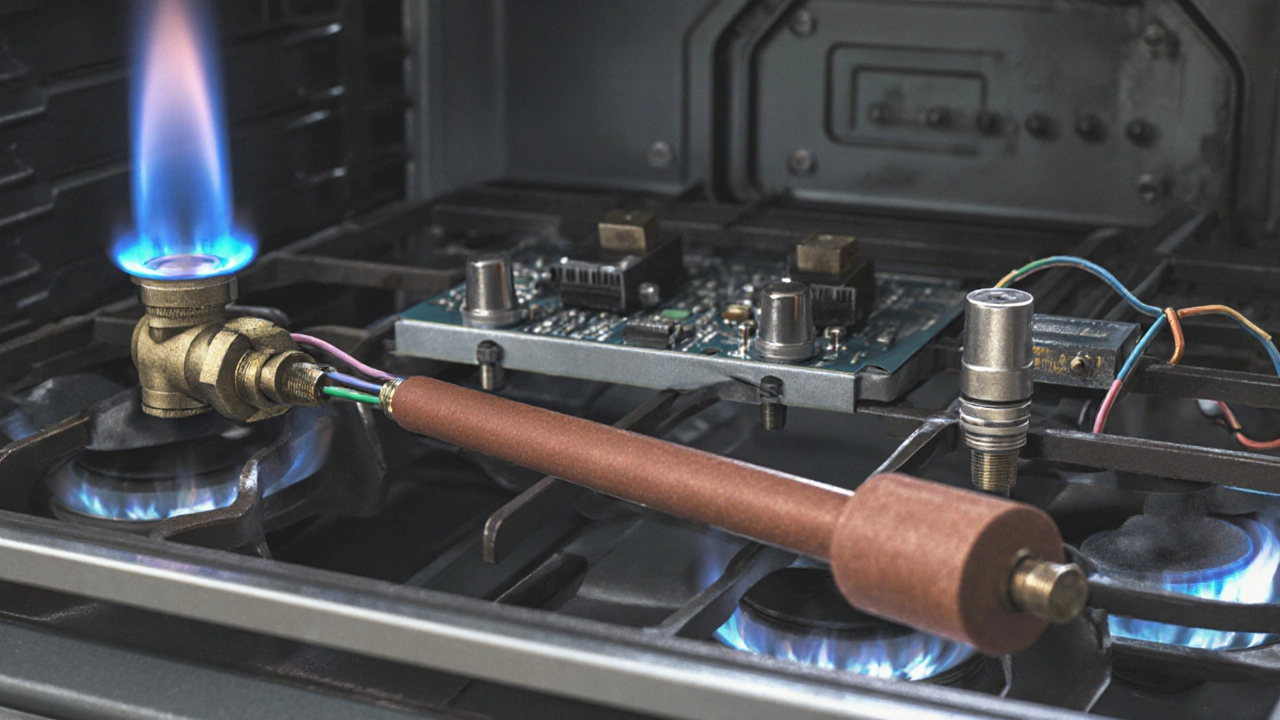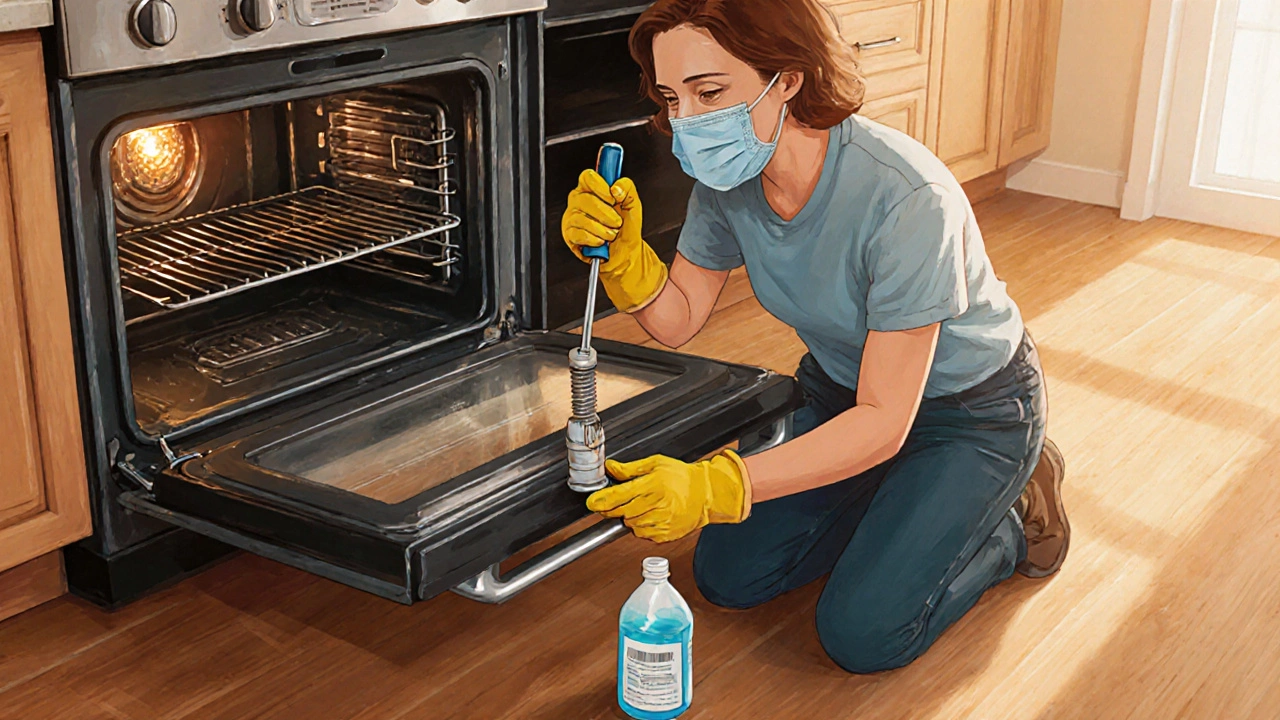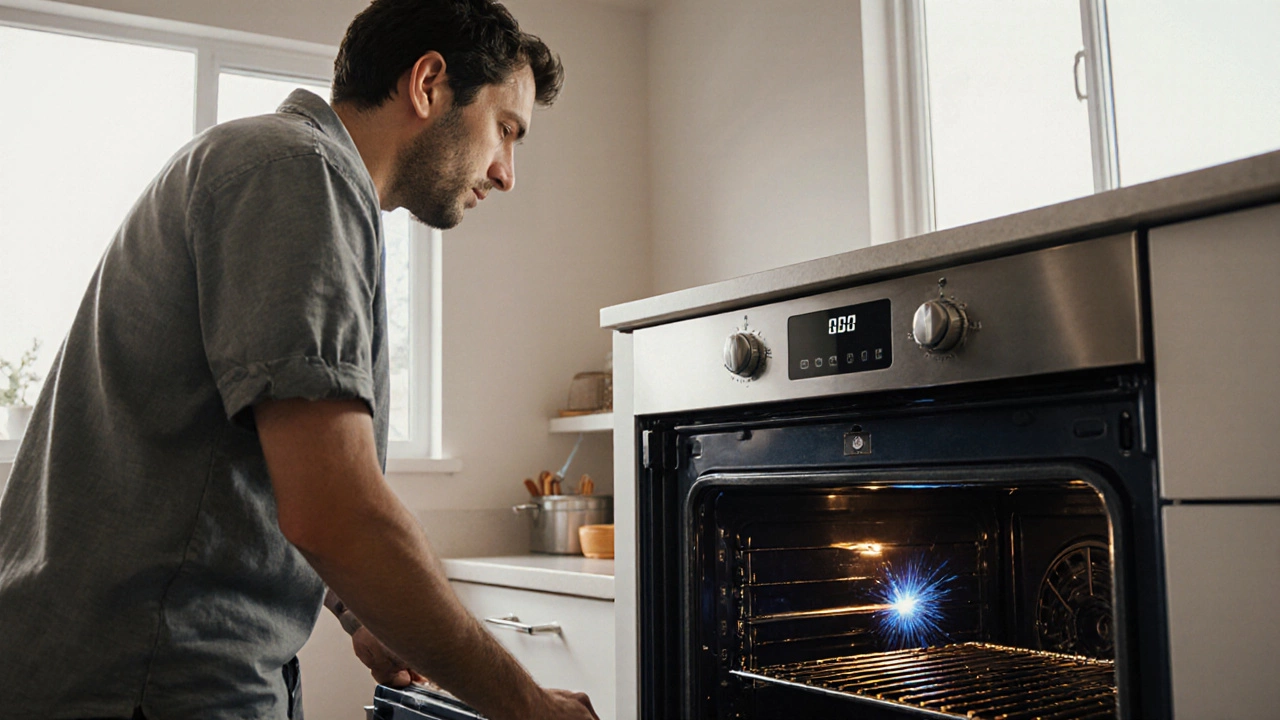Gas Oven Igniter Symptom Checker
Oven Igniter Problem Checker
Select the symptoms you're experiencing with your gas oven to determine if your igniter may be failing.
Ever stood in front of a gas oven that just won’t catch fire, or heard endless clicking while the temperature stays stubbornly low? Those frustrating moments usually point to a failing bad gas oven igniter. Knowing the warning signs saves you time, money, and the hassle of calling a technician for a problem you could spot yourself.
Quick Takeaways
- The oven won’t light at all or lights after several attempts.
- Repeated clicking or sparking sounds without ignition.
- Persistent gas smell after trying to start the oven.
- Uneven or delayed heating, causing baking failures.
- Digital error codes related to ignition failure.
What Is a Gas Oven Igniter?
In a gas oven igniter a metal rod or ceramic strip that glows red to ignite the gas flowing to the burner, the core job is simple: create a spark or heat source that lights the gas. Most modern ovens use a piezoelectric or electric spark igniter, but the principle stays the same-heat the gas until it burns.
How Does It Work?
When you turn the oven knob, the control board sends a low‑voltage pulse to the igniter the component that produces a bright spark or hot surface to ignite the gas. That spark lights the gas released by the burner the part where gas mixes with air and burns to produce heat. Once the flame is established, a flame sensor a safety device that detects the presence of flame and signals the oven to stay on confirms the process, allowing the oven to ramp up to the set temperature.

Typical Symptoms of a Failing Igniter
- Oven won’t light at all - You turn the knob, hear a click, but no spark or flame appears.
- Multiple clicks before ignition - The oven clicks repeatedly, finally sparking after a few seconds.
- Delayed heating - The oven eventually lights, but it takes much longer to reach the desired temperature.
- Strong gas odor - You smell gas after trying to start, indicating the gas valve opened but the igniter didn’t fire.
- Error codes on digital displays - Many newer models show codes like ‘F3’ or ‘E4’ that correspond to ignition failure.
- Uneven baking or hot spots - The oven cycles on and off because the igniter ignites sporadically.
- Oven shuts off mid‑cycle - The flame sensor thinks the flame is out and cuts power to prevent gas buildup.
Diagnosing the Igniter Yourself
Before you call a pro, you can run a few simple checks.
- Visual inspection: Open the oven door (after unplugging) and look at the igniter. Cracks, black spots, or a broken ceramic coating are clear red flags.
- Continuity test: Using a multimeter an instrument that measures electrical resistance, voltage, and continuity, set it to ohms. A good igniter typically shows 70-200Ω. Infinite resistance means it’s burnt out.
- Listen for sparking: Turn the oven on and stand back. You should hear a sharp “snap” or see a brief blue spark. No sound usually points to a faulty igniter.
- Check the gas valve: If the igniter looks fine but you still smell gas, the gas valve the component that releases gas to the burner when the oven is commanded to heat may be stuck open. This is a job for a licensed technician.
- Verify the safety valve: Many ovens have a safety valve that shuts off gas if the igniter fails to light. If this valve is stuck, you’ll get repeated clicks with no flame.
Replacing a Bad Igniter
If your tests point to a broken igniter, replacement is usually straightforward.
- Turn off the oven’s power and shut off the gas supply at the main line.
- Remove the oven’s back panel or bottom cover to expose the burner assembly.
- Locate the igniter - it’s usually a thin, reddish‑brown rod sitting just behind the burner.
- Disconnect the igniter’s wiring harness. Most connections are simple push‑in clips.
- Unscrew the igniter brackets and gently pull the unit out.
- Insert the new igniter, re‑attach the wiring, and secure the brackets.
- Replace the back panel, turn the gas back on, restore power, and run a test cycle.
Most homeowners can finish the job in under an hour, but always double‑check for gas leaks with a soap‑water solution after re‑pressurizing.

Prevention Tips to Keep Your Igniter Happy
- Clean the burner ports regularly - food debris can cause uneven gas flow, making the igniter work harder.
- Avoid using harsh chemicals near the igniter; mild soap and a soft brush are enough.
- Run a short “pre‑heat” cycle once a month even if you’re not cooking; this keeps the igniter warm and functional.
- Make sure the oven’s ventilation isn’t blocked; poor airflow can cause overheating of the igniter.
Symptom vs. Likely Issue
| Symptom | Most Likely Cause |
|---|---|
| Oven won’t light | Igniter burnt out or cracked |
| Multiple clicks, no flame | Weak igniter or faulty safety valve |
| Strong gas smell | Gas valve open, igniter not firing |
| Delayed heating | Partial igniter failure or clogged burner |
| Error code ‘F3’/‘E4’ | Control board detecting ignition fault |
Frequently Asked Questions
How long does a gas oven igniter usually last?
Most igniters last 5‑7 years under normal use, but heavy daily baking can shorten that to 3‑4 years.
Can I use a regular electric igniter as a replacement?
No. Oven igniters are specifically rated for high‑temperature gas environments. Using the wrong part can cause fire hazards.
Is it safe to smell gas while the oven tries to ignite?
A slight whiff can happen, but a strong, persistent odor means the igniter failed and gas is still flowing. Turn off the oven, shut the main gas valve, ventilate, and call a professional.
Do I need a licensed plumber to replace the igniter?
If you’re comfortable turning off the gas supply and handling basic electrical connections, you can replace it yourself. However, any work involving the gas line should be done by a licensed professional to comply with safety regulations.
Why does my oven click but never light even after I cleaned the burner?
Repeated clicking often means the igniter is weak or the safety valve isn’t allowing gas flow. A continuity test with a multimeter will confirm if the igniter needs replacement.


